Last Updated on September 20, 2018 by Heather Hart, ACSM EP, CSCS
If you only read one post of mine this year, I hope it will be this important one. We’re going to discuss a somewhat common, potentially deadly condition that as a runner or endurance athlete you definitely need to know about: deep vein thrombosis, or “DVT”.
In a society that is woefully inactive and unhealthy, it would be easy to assume that the very regular exercise you participate in as an endurance athlete (runner, triathlete, cyclist, etc.) puts you out of the “at risk” category for many negative health conditions. And you would be correct, for the most part. Exercise truly is a cure-all, helping lower risks of everything from cardiac disease, to diabetes, anxiety to even hangovers.
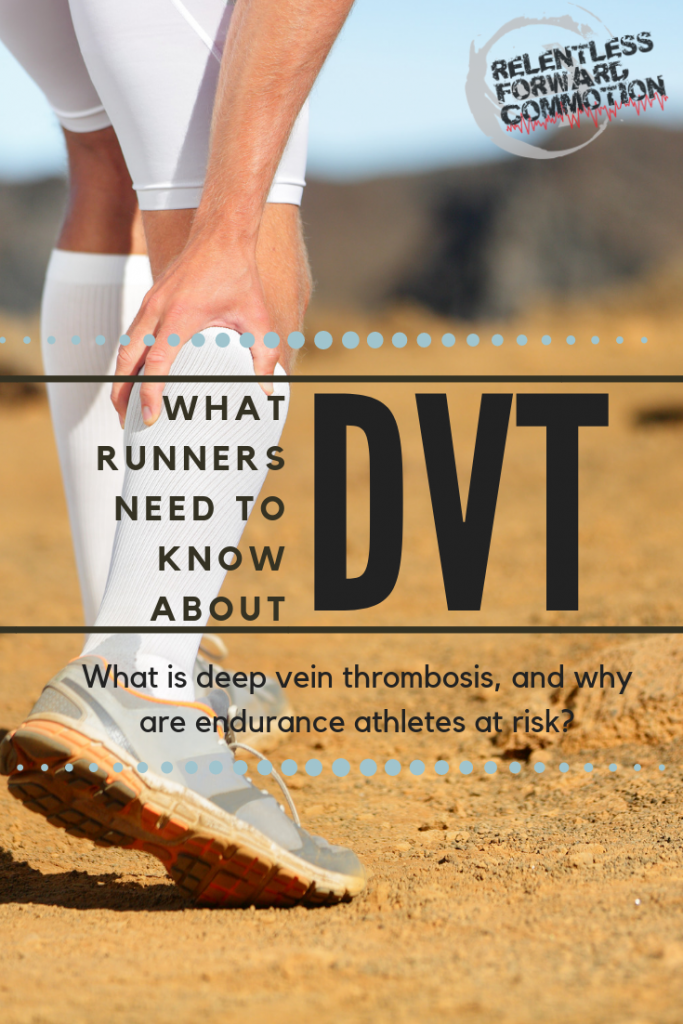
In the case of DVT, a lower resting heart rate from regular physical activity is often the culprit (among others) for putting endurance athletes at risk for blood clots, and potentially even a deadly embolism.
Scary, right? And before you think “this will never happen to me”, think again. I know at least a half a dozen athletes personally that have had a DVT. One of them was my sister, who we nearly lost to a pulmonary embolism (you can read more about that HERE). Heck, even very fit, tennis superstar Serena Williams suffered from a DVT turned pulmonary embolism back in 2011. This is a very real, surprisingly common condition that we don’t hear about enough. So let’s learn more:
What is Deep Vein Thrombosis (DVT)?
Haven’t heard of DVT? You aren’t alone. Surveys of public knowledge on the topic of deep vein thrombosis shows that nearly 40% of people have no idea what DVT is (source). Deep Vein Thrombosis occurs when a blood clot forms in one of the lower veins in your body, typically in your legs. If those blood clots break loose (embolus) and travel throughout the body, they can find themselves in your lungs or brain resulting in a pulmonary embolism or stroke. The clot will block blood flow to your lungs, and can potentially kill you.
Deep Vein Thrombosis is not an uncommon condition, according to the CDC, it is estimated that up to 900,000 Americans are affected by DVT every year, and between 60,000-100,000 Americans die of DVT or pulmonary embolisms as a result of DVT every year. (source)
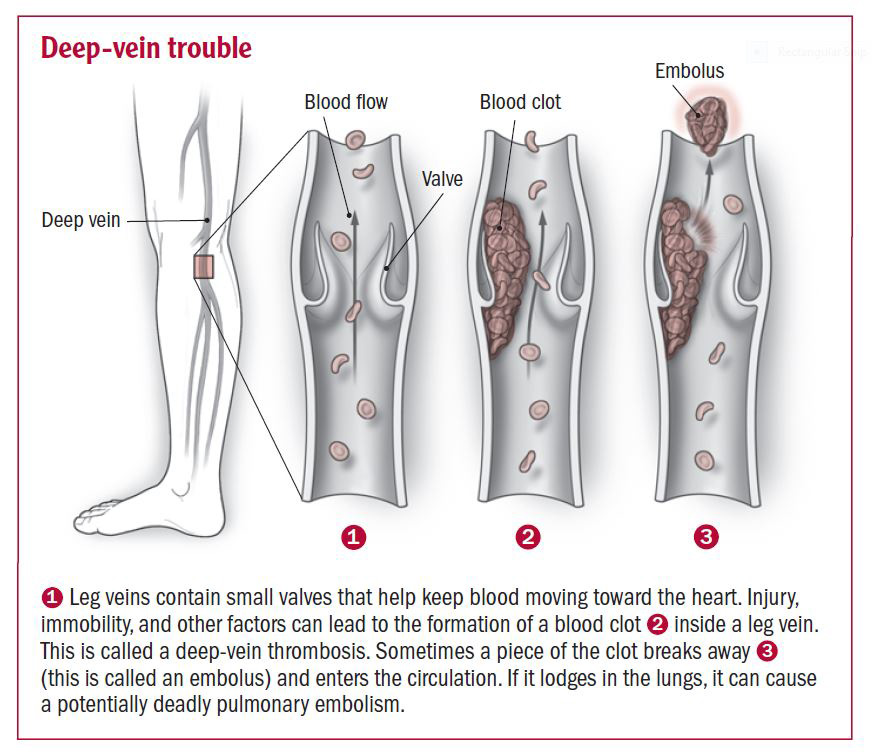
source: Harvard.edu
How does DVT happen?
A DVT occurs when the movement of blood through the veins slows down, allowing the blood to form a clot. There are a number of risk factors that can increase the risk of DVT, including (but not limited to):
- Injury to the veins
- Decreased movement (traveling, flying, bed rest, etc.)
- Increased estrogen (often due to birth control pills)
- Health conditions such as cancer, heart disease, lung disease, etc.
- Pregnancy & recent birth
- Dehydration
- Family history of DVT
- Blood clotting conditions
Why are endurance athletes at risk?
This all sounds like one of those crazy conditions that happens to those who aren’t in great shape, right? Well here’s the kicker: due to increased exercise and activity levels, many endurance athletes have much lower resting heart rates than non-athletes. Lower resting heart rates mean that the blood in your body, particularly extremities that are further away from the heart, moves slower throughout your body because the heart is not pumping as quickly, especially when you are immobile.
Combine the low resting heart rate with inactivity due to travel or other everyday, common factors (flying to or from a race, car rides, office chairs, sitting around all weekend because your marathon legs hurt?) and you’ve got a recipe for DVT disaster.
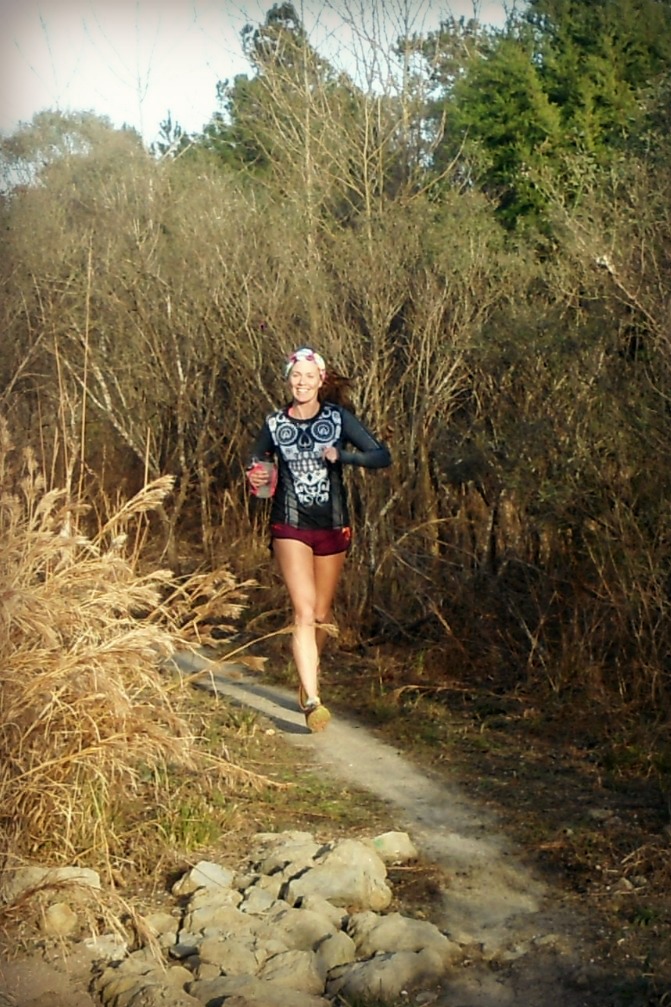
Happy, healthy, low resting heart rate runner.
Other athlete specific risk factors can include:
- dehydration due to training or racing, as dehydration can cause the viscosity (thickness) of the blood to increase.
- Injuries, especially to blood vessel walls
- Immobilization of body parts due to injuries
Further, DVT may go undiagnosed in athletes.
It’s not uncommon for an endurance athlete to write off a nagging pain in the lower body as an overuse injury, a minor pulled muscle, or some other side effect of training and racing. Because athletes are often suffering from some sort of discomfort or injury, a potential DVT may go undiagnosed.
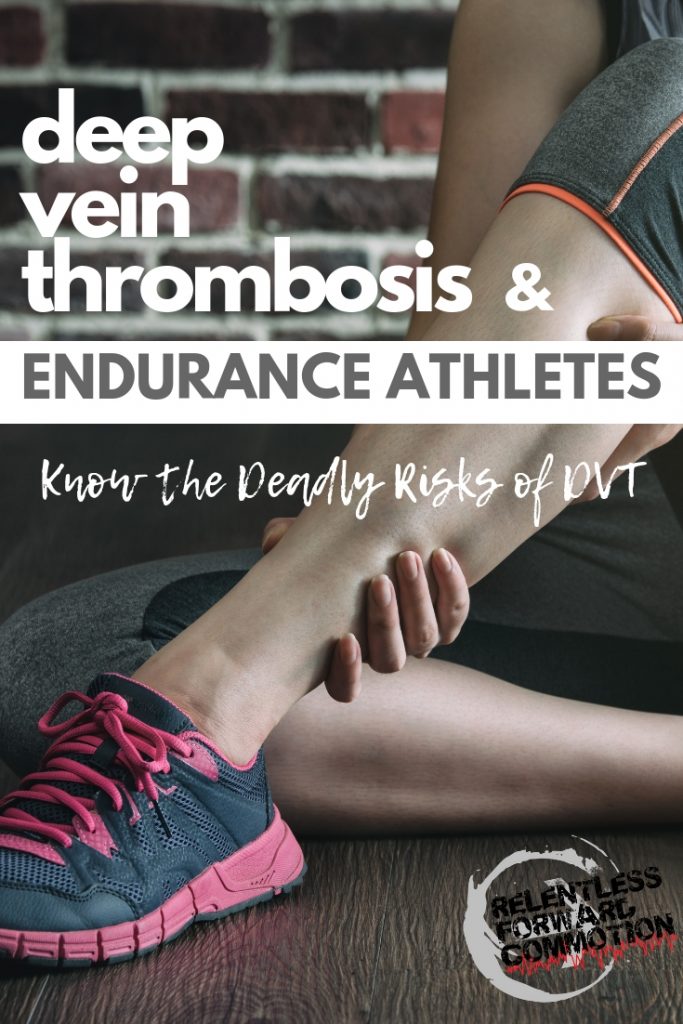
What are the symptoms of DVT?
Symptoms of deep vein thrombosis include:
– Swelling in the affected leg (but rarely in both legs at the same time)
– Cramping or soreness in the affected leg, typically beginning in the calf. Often, the pain will present itself when you are standing or exercising, but may disappear almost immediately when seated.
– Red or discolored skin on the affected leg
– Skin that is warm to the touch on the affected leg
It’s important to note that DVT can often be symptomless before leading to a pulmonary embolism. Symptoms of PE are listed in the “what to do if I suspect DVT” section below.
What can I do to help prevent DVT?
While a DVT may occur at anytime, to almost anyone, there are a number of preventative steps you can…and should…take as an endurance athlete.
1) Stay hydrated. This is a given for athletes regardless of DVT. Dehydration can cause a slew of health problems, as well as negatively impact athletic performance. But in the case of preventing deep vein thrombosis, hydration levels will help keep your blood volume at a healthy level, preventing viscous blood that moves slowly.
2) Move frequently. If you are traveling or in a situation where you are forced to be immobile, make a conscious effort to move more. If you are on a plane or in a car, frequently flex your legs, extend your legs, move your feet and ankles, essentially anything to increase blood flow to the lower extremities. Be sure to get up and move around as frequently as safely possible.
3) Wear compression socks or sleeves. While the research is still up in the air as to whether or not compression socks help increase athletic performance, one thing is for certain: graduated compression socks DO help increase blood flow to the lower extremities. In fact, this is exactly why hospitals use them on patients that are bed ridden, or have recently undergone surgery. Plus, compression socks feel really good after a long run or race.
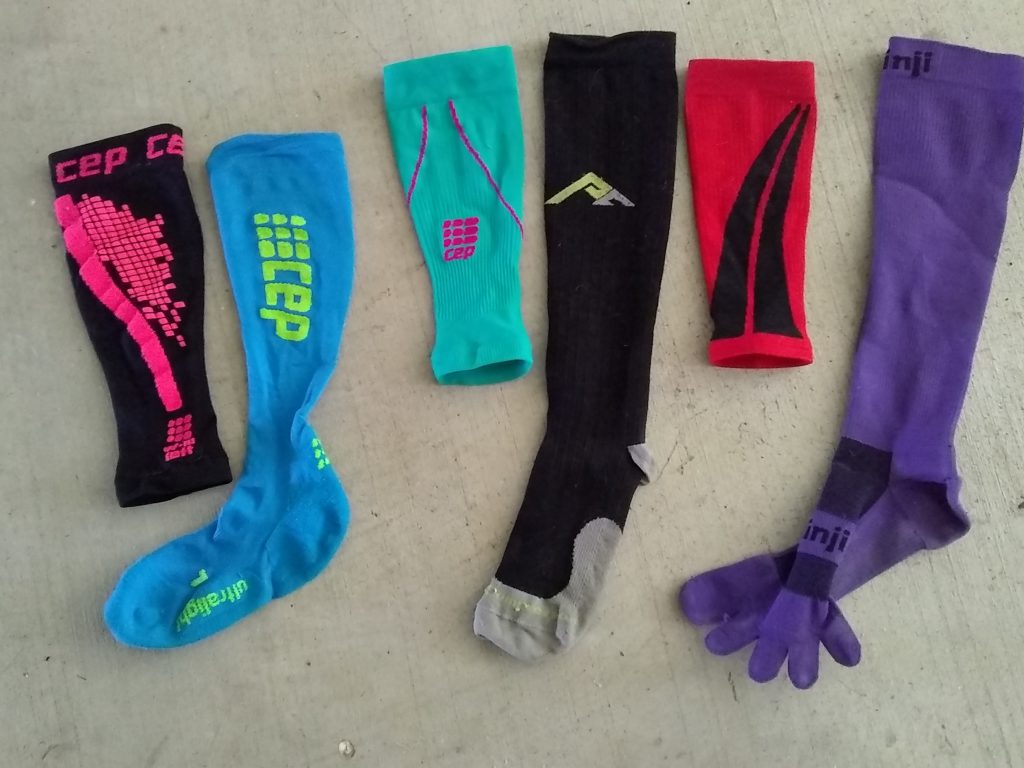
A variety of compression sock options
I suspect I might have a DVT, what do I do?
If you suspect you may have a deep vein thrombosis, contact your health care provider immediately. If you suspect you have a pulmonary embolism, you need to consider that a medical emergency, and seek immediate help. Signs of a pulmonary embolism include:
- Shortness of breath
- Chest pain
- Cough, potentially with blood
- Clammy or discolored skin (cyanosis)
- Fever
- Excessive sweating
- Rapid or irregular heartbeat
- Lightheadedness or dizziness
CONCLUSION:
Please know that I did not write this post to terrify you or illicit unnecessary fear. However, as an endurance athlete myself, I know how stubborn we can be when it comes to aches and pains. If you are reading this post and you’ve never heard of DVT until today, I hope that you will tuck this little bit of knowledge into the back of your mind for the next time you or a running pal experience any questionable lower limb, leg, or groin pain. Knowledge is power, and in this case, knowing the signs and symptoms of deep vein thrombosis could potentially save a life.
Heather Hart is an ACSM certified Exercise Physiologist, NSCA Certified Strength and Conditioning Specialist (CSCS), UESCA certified Ultrarunning Coach, RRCA certified Running Coach, co-founder of Hart Strength and Endurance Coaching, and creator of this site, Relentless Forward Commotion. She is a mom of two teen boys, and has been running and racing distances of 5K to 100+ miles for over a decade. Heather has been writing and encouraging others to find a love for fitness and movement since 2009.

Daphne
Thank you for this great info, Heather. I’m sorry you didn’t get to the BFC, but your spirit of endurance shines through in all the ways. You’ve made the “evacuation vacation” memorable for your kids – though having lived through VT’s Irene in 2011, I know your pain. I am saddened by the devastation in NC and hope that you can return soon. Keep persisting. Keep shining.
Coco
This is a GREAT article and SO important. I got a DVT on a flight to Australia and rationalized it away for 2 WEEKS. I was so lucky to stayed in place. My calf hurt A LOT and was a bit swollen but I figured it had gotted banged by a suitcase at the airport, or strained somehow. Glad your sister was OK too.
amysaysso2015
okay so I got only a little scared by reading. I actually knew about DVT already. I mostly worry when I travel after a long race. Especially flying. I wear compression and I get up an move frequently and I just kind of cross my fingers.
Erica @ erica finds
I had a DVT in 2011 and it took months to diagnose. I went from running a 1:40 half 1 day to not being able to run 1 eight minute mile a few weeks later. This was due to small pulmonary embolisms going into my lungs. I went to all kinds of Drs and got tons of bad advice. My chiropractor found it a few months in. Did you have a DVT?
Courtney
Great post. In August 2015 I was diagnosed with bilateral PE, and I still don’t know the real cause of it. I’ve done many tests and seen various specialists and all have come back inconclusive. This post is a great reminder to be aware and listen to your body.
Being a distance runner, I knew when something wasn’t feeling quite right on my runs, but I also kept putting off a checkup until the pain in my chest became too severe to be ignored. Right to the ER and the Dr’s wasted no time admitting me and starting treatment. It was a long recovery, but I did recover and now back to running as I was prior to the PE.